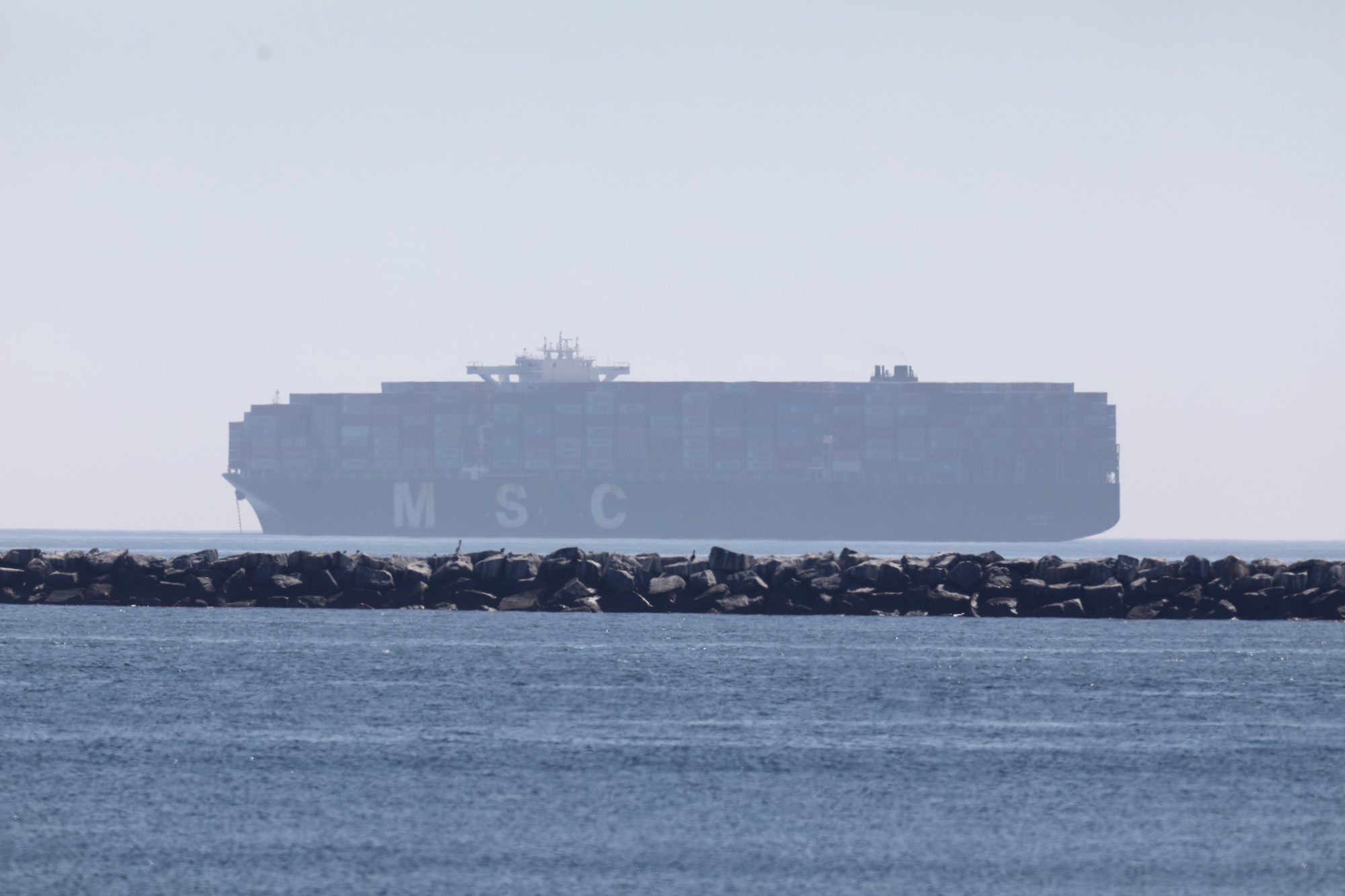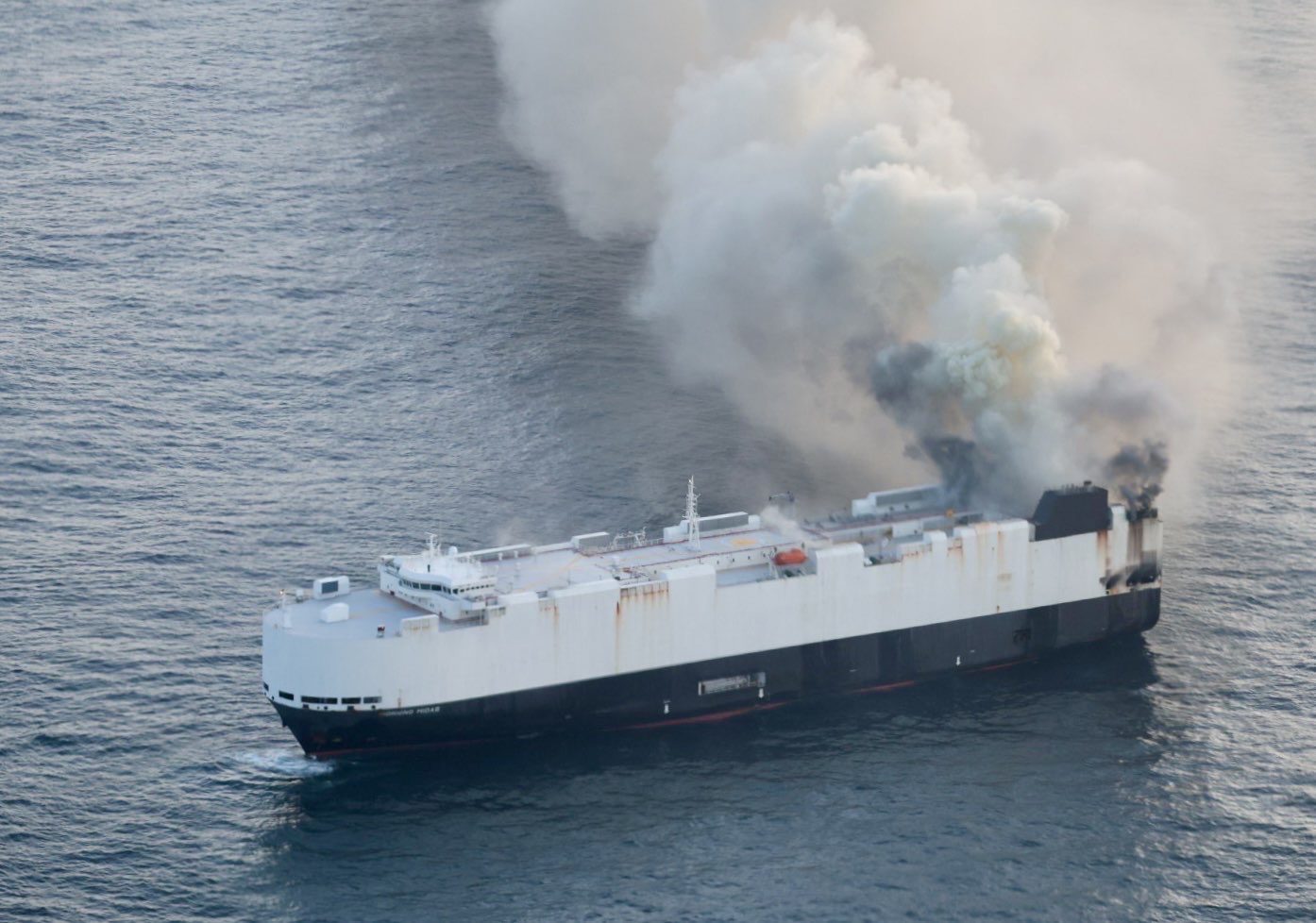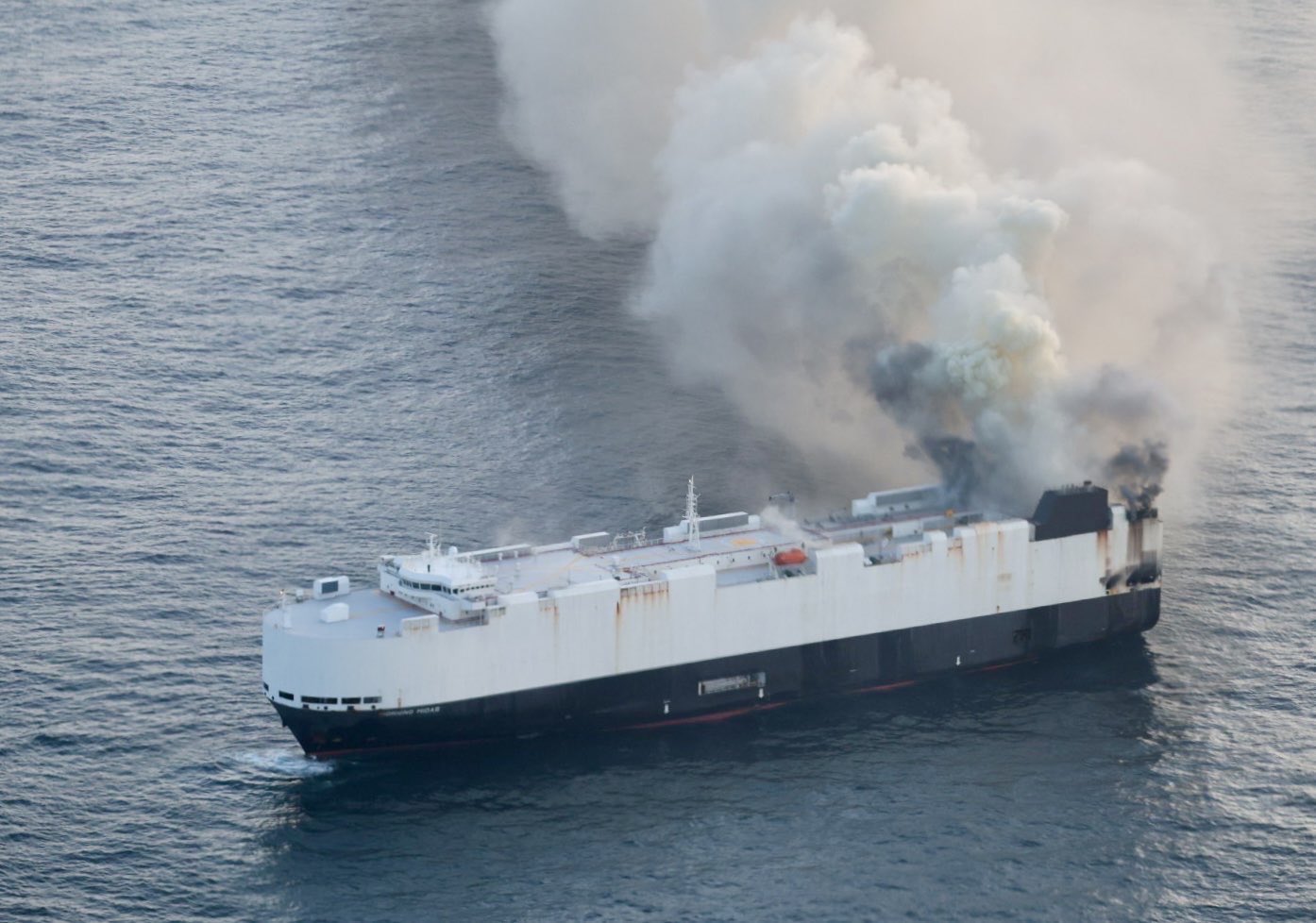The National Transportation Safety Board (NTSB) has recommended new alarms and procedures for pipeline incursions and a change to an anchorage following an oil spill off the coast of Southern California in 2021. The spill, which occurred near the ports of Los Angeles and Long Beach, resulted from ship anchors damaging an underwater pipeline.
According to NTSB investigators, the oil leak in San Pedro Bay began on October 1, 2021, but resulted from an anchor strike on the pipeline that happened eight months earlier. The containerships Beijing and MSC Danit dragged their anchors and contacted the pipeline during high winds and seas caused by a cold front.
Approximately 588 barrels of oil leaked from the pipeline, causing around $160 million in damages, including cleanup costs.
Due to sediment buildup on the pipeline, investigators determined that the initial anchor dragging incident likely occurred several months to as long as one year before the first reports of the oil spill. Identifying the culprits initially seemed challenging, as investigators would have had to sift through a year’s worth of ship movements. However, they identified January 25, 2021, as a date of particular interest due to a heavy weather event that occurred that morning, leading to about half of the 50 ships waiting in anchorages to set sail for storm avoidance.
The incident took place when the San Pedro Bay anchorages were crowded with ships waiting to enter the ports of Los Angeles and Long Beach amid an imports surge that overwhelmed supply chains and created a backup off Southern California ports.
The NTSB determined that the vessels’ assigned anchorage positions did not provide the crews with sufficient time or space to heave in their dragging anchors before contacting the pipeline. The anchor contact by MSC Danit was the initiating event that led to the crude oil release, as per the NTSB findings.
As a result, the NTSB recommended that the U.S. Coast Guard implement a proposed change to the anchorage, moving its boundary farther away from the pipeline. Additionally, the NTSB suggested the development and implementation of audible and visual alarms for Vessel Traffic Services (VTS) watchstanders to notify them when an anchored vessel is encroaching on a pipeline. They also recommended procedures for VTS to notify pipeline and utility operators following potential incursions on submerged pipelines and utilities.
NTSB Chair Jennifer Homendy emphasized the need for anchorages to be designed considering the size of vessels using them and the time it takes for crews to react during anchor dragging incidents. She also stressed the importance of immediate reporting of potential pipeline damage to mitigate any oil release.
“NTSB investigators identified instances where this leak could have been avoided or mitigated, including making the pipeline operators aware of potential anchor dragging so damage could be identified and repaired before an oil release. Investigators also found that the controllers were not adequately trained to handle abnormal operating conditions, which delayed shutting down and isolating the pipeline,” Homendy said.
The investigation revealed contributing factors to the leak, including undetected damage to the pipeline, insufficient training of the pipeline controllers, and inappropriate response to leak alarms. It took eight leak alarms before controllers shut down and isolated the line, and the NTSB found that if proper procedures had been followed, the volume of crude oil released could have been significantly reduced.
The NTSB has also issued recommendations to the Pipeline and Hazardous Materials Safety Administration (PHMSA), the Marine Exchange of Southern California, and owners and operators of pipelines regulated by PHMSA.
The investigation’s meeting summary, probable cause, findings, and safety recommendations are available on the NTSB’s investigation webpage. The final report will be published on the NTSB’s website in the coming weeks.
MSC Mediterranean Shipping Company, the operator of MSC Danit, announced in April that it had settled claims with the subrogate insurers of Amplify Energy, the owner and operator of the pipeline. Amplify Energy disclosed separately that it had received $85 million in net proceeds from the vessels believed to have struck the pipeline.
The public docket for the investigation contains more than 4,000 pages of factual information, including reports, interview transcripts, and other investigative materials.

 Join The Club
Join The Club










